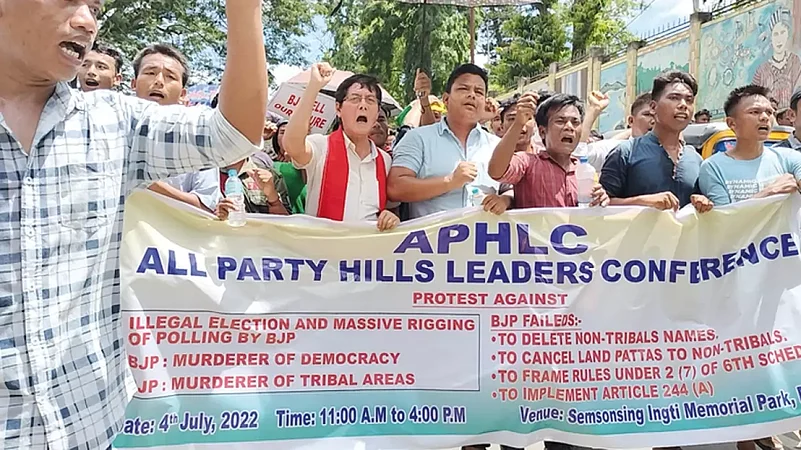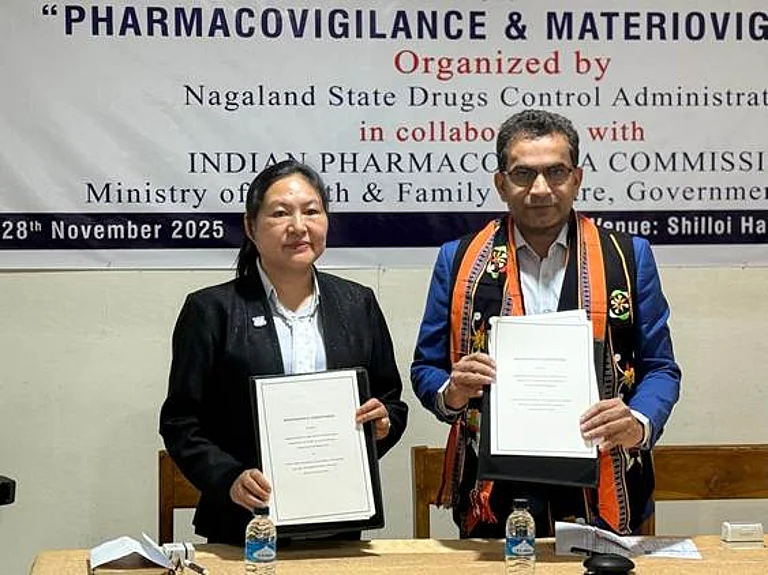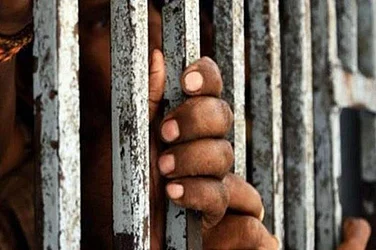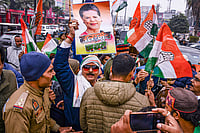The upcoming elections in the North-eastern states of Tripura, Nagaland, and Meghalaya have given a number of regional parties from other states a chance to prove their national credentials. With anti-incumbency strong in certain pockets and a division of issues and political agendas in Nagaland, the emergence of these regional powers can harm the vote share of the ruling Nationalist Democratic Progressive Party-Bharatiya Janata Party (NDPP-BJP) alliance.
After sweeping victories in Punjab and Delhi elections and making an entry in BJP bastion Gujarat, the Aam Aadmi Party (AAP) has also been trying to make inroads in Nagaland in 2023. It has appointed former MLA Asu Keyho as the President of its Nagaland unit. Earlier in January, the AAP had said that it would contest as many seats as possible in Nagaland on its own. The party launched its Nagaland unit in 2016 in Dimapur and has expanded since. Winning a seat in the north-eastern state of Nagaland would go a long way in cementing AAP’s position as a national party in the run up to the crucial 2024 Lok Sabha elections.
Besides the AAP, the Janta Dal-United (JD-U), Rashtriya Janta Dal (RJD), and Lok Janshakti Party (LJP) are also in the fray.
Regional parties in Nagaland
Nitish Kumar had visited Nagaland last year on the occasion of the birth anniversary of Jayaprakash Narayan, who had been involved in the peace talks in Nagaland in previous decades. The JD(U) has been contesting elections since the 2000s. This year, the party has fielded Kitoho Rotokha as the party’s candidate from Nagaland’s Ghaspani II constituency. In the 2018 assembly elections, JD(U) had contested across 13 seats and had won one seat. The overall vote share was 4.49 per cent. Having performed remarkably well in the 2019 Arunachal Pradesh elections and 2022 Manipur polls, where it is already considered a state party, the JD(U) needs to poll 8 per cent votes in Nagaland this time to become a state party in the third north-eastern state (fourth overall, including Bihar).
JD(U) National President Rajiv Ranjan has said that the BJP has “betrayed” the people of Nagaland by not working for the Naga solution”.
“In 2018, there was an election in Nagaland and the BJP gave an assurance to the people that this election is an election for a solution. Now, after the completion of five years, the people of Nagaland feel betrayed because nothing has happened for the solution,” said Ranjan.
AAP and JD(U) leaders have also accused the BJP of using money power to influence elections.
AAP Nagaland chief Rajesh Sharma told media, “Politics is a game of money in Nagaland. The current state of politics in Nagaland is totally dependent on money. AAP never encourages such politics but wants aspirants who wish to work for a positive change, overcoming the politics of corruption.”
The increase in the number of parties also means the increased possibility of alliances and coalitions. At present, the only pre-poll alliance in Nagaland is between the ruling NDPP and BJP which have fielded candidates in a 40:20 ratio.
The regional parties in Meghalaya
In Meghalaya, the emergence of regional parties is older than the state. The first regional political party, the All Party Hills Leaders Conference (APHLC), was formed to fight for statehood of Meghalaya. Later, with the unification of more regional parties, it later emerged as the United Democratic Party (UDP) in 1997.
In 2018 assembly polls, the UDP won six seats and decided to support the NPP-led government. With a significant voter-base in Khasi-Jaintia region, the UDP is going to contest in 46 seats this time. It is fielding 30 candidates in Khasi-Jaintia Hills and another 16 in Garo Hills dominated by the NPP.
Talking to Outlook, UDP President Metbah Lyngdoh said that the smaller parties, especially UDP, have a chance of securing a good number of seats in these polls as people have felt that they should have given a chance to the regional parties as the national parties have not done much for the people of Meghalaya.
He further said, “Since the statehood in 1972, in these 50 years, Meghalaya has been mostly ruled by the national parties. This time, we could see that regional parties have brighter chances of faring in these polls — especially UDP as it is the only regional party that exists in numbers. This time we are very much connected with the people at the grassroots and we have realised that people want to give a chance to the regional parties this time.”
The UDP got a new lease of confidence ahead of the polls when five sitting MLAs of the Hill State People’s Democratic Party (HSPDP), Trinamool Congress (TMC), Congress, and an Independent joined the party in January.
The People’s Democratic Front (PDF), another regional party formed in 2017 and an ally of the NPP-led government, has decided to contest the polls alone. The party in its debut performance in 2018 polls sent four MLAs to the assembly. It also got 8.2 per cent of the total vote. However, two of its sitting MLAs —Hamletson Dohling and Jason S Mawlong—jumped ship and joined the Conrad Sangma-led National People’s Party (NPP).
“The exit of these two MLAs will not hamper the party. People in Meghalaya have seen developments in agriculture and sports — the two departments that I hold. This time, we are hoping to get at least seven to eight seats,” said PDF leader Banteidor Lyngdoh, part of the Meghalaya Democratic Alliance (MDA).
The Voice of People Party (VPP) is another new entrant in the politics of Meghalaya. The regional party is formed by former legislator Ardent Miller Basaiawmoit over a year ahead of the polls in November 2021. The VPP is contesting in 18 seats this time in Khasi-Jaintia Hills region. The party, whose symbol is a winnower, says its motive is to clean politics from corruption.
Basaiawmoit said, “The party is formed to bring about a political change through clean politics and we are confident of winning all the 18 seats. We will not only ensure good governance but also make sure that those who have plundered the growth of the state through corruption be brought to justice.”
On February 9, VPP candidate from North Shillong, Adelbert Nongrum, filed an FIR asking for an enquiry regarding misappropriation of Covid -19 funds by the incumbent government. Nongrum is the incumbent MLA of North Shillong. Nomgrum was earlier associated with the Khun Hynniewtrep National Awakening Movement (KHNAM) — another regional party of Meghalaya.
Another regional party in the fray is the Hill State People’s Democratic Party (HSPDP), which won two seats in 2018 polls. However, HSPDP MLA and Cabinet minister Renikton Lyngdoh Tongkhar left the party in January and joined the UDP. One of the promises in the party manifesto released last week is the creation of the Khasi-Jaintia state.
Notably, in the history of Meghalaya, regional parties have formed the government five times. However, barring a couple of times, they could not complete full terms. On other occasions, they were seen joining hands with national parties like Congress and the NPP.
In 2018 polls, seven regional parties joined hands with NPP to form the government whereas the Congress was the one with most of the MLAs.









 and Rahul Gandhi (R)?auto=format%2Ccompress&fit=max&format=webp&w=768&dpr=1.0)
















